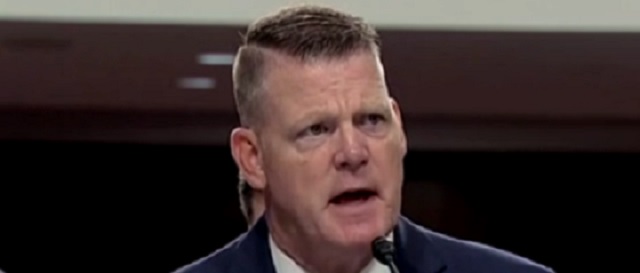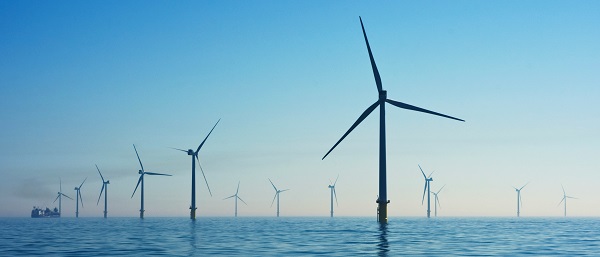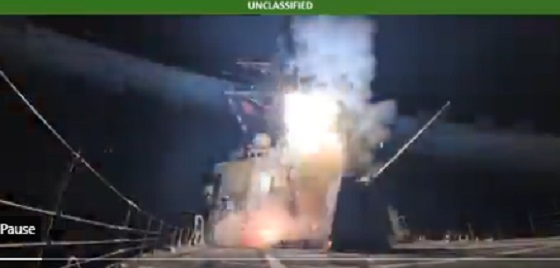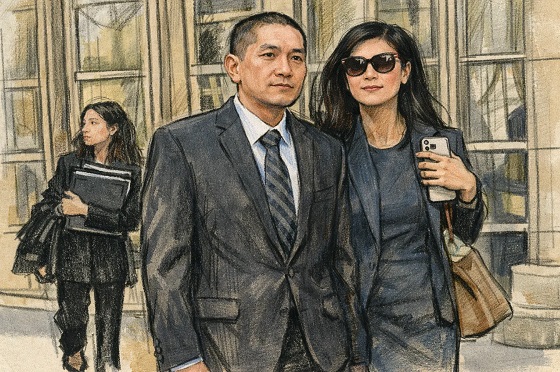International
Acting Secret Service Chief ‘Retaliated Against’ Agents Who Had Security Concerns At Trump Event, Whistleblower Claims

Acting Secret Service Director Ronald Rowe
From the Daily Caller News Foundation
A whistleblower alleged that Secret Service acting Director Ronald Rowe personally cut security resources and “retaliated” against agents with security concerns leading up to former President Donald Trump’s rally on July 13, according to a letter released Thursday.
The whistleblower alleged that Rowe personally implemented “significant cuts” to the Counter Surveillance Division (CSD), which does advanced threat assessments for venues, and alleged that agents who expressed security concerns were “retaliated against,” according to Missouri Republican Sen. Josh Hawley’s letter to Rowe. As a result, the CSD failed to perform its “typical evaluation” of the rally venue in Butler County, Pennsylvania, and “was not present on the day” of the attempted assassination.
“The whistleblower claims that if personnel from CSD had been present at the rally, the gunman would have been handcuffed in the parking lot after being spotted with a rangefinder,” the letter states.
🚨🚨 NEW – Whistleblower tells me Secret Service Acting Director Rowe personally directed cuts to the USSS agents who do threat assessments for events. Whistleblower says those agents were NOT present in Butler – and some of them had warned of security problems for months pic.twitter.com/v9igQ5L7FZ
— Josh Hawley (@HawleyMO) August 1, 2024
“Secret Service personnel expressed alarm that individuals were admitted to the event without vetting,” the letter says. “The whistleblower alleges that those who raised such concerns were retaliated against.”
At the July 13 rally, 20-year-old Thomas Matthew Crooks was able to fire shots at the former president from a rooftop just 130 yards away from the stage. Crooks had reportedly been spotted by witnesses, flagged by Secret Service and even was identified by a local counter sniper over an hour and a half before Trump took the stage.
“A whistleblower has alleged to my office that the Secret Service Counter Surveillance Division (CSD), the division that performs threat assessment of event sites before the event occurs, did not perform its typical evaluation of the Butler site and was not present on the day,” the letter states. “This is significant because CSD’s duties include evaluating potential security threats outside the security perimeter and mitigating those threats during the event.”
As a result of these security lapses, Crooks was able to take aim at and injure the former president, kill volunteer firefighter Corey Comperatore and injure attendees James Copenhaver and David Dutch, who are both in stable condition.
Rowe testified on Tuesday before a joint hearing held by the Senate Judiciary and Homeland Security Committee after U.S. Secret Service Director Kimberly Cheatle resigned on July 23 following her own evasive congressional testimony. Rowe’s testimony was similarly evasive as he left many lawmakers’ questions unanswered.
“You acknowledged in your Senate testimony that the American Glass Research complex should have been included in the security perimeter for the Butler event,” the letter says. “The whistleblower alleges that because CSD was not present in Butler, this manifest shortcoming was never properly flagged or mitigated.”
Despite this, Trump has vowed to continue holding outdoor rallies and said that the Secret Service will “substantially step up” their security detail going forward, according to a post on Truth Social from Saturday.
The Secret Service didn’t immediately respond to the Daily Caller News Foundation’s request for comment.
Featured image credit: Screenshot/Rumble/Senate Judiciary Committee
Business
Residents in economically free states reap the rewards

From the Fraser Institute
A report published by the Fraser Institute reaffirms just how much more economically free some states are compared with others. These are places where citizens are allowed to make more of their economic choices. Their taxes are lighter, and their regulatory burdens are easier. The benefits for workers, consumers and businesses have been clear for a long time.
There’s another group of states to watch: “movers” that have become much freer in recent decades. These are states that may not be the freest, but they have been cutting taxes and red tape enough to make a big difference.
How do they fare?
I recently explored this question using 22 years of data from the same Economic Freedom of North America index. The index uses 10 variables encompassing government spending, taxation and labour regulation to assess the degree of economic freedom in each of the 50 states.
Some states, such as New Hampshire, have long topped the list. It’s been in the top five for three decades. With little room to grow, the Granite State’s level of economic freedom hasn’t budged much lately. Others, such as Alaska, have significantly improved economic freedom over the last two decades. Because it started so low, it remains relatively unfree at 43rd out of 50.
Three states—North Carolina, North Dakota and Idaho—have managed to markedly increase and rank highly on economic freedom.
In 2000, North Carolina was the 19th most economically free state in the union. Though its labour market was relatively unhindered by the state’s government, its top marginal income tax rate was America’s ninth-highest, and it spent more money than most states.
From 2013 to 2022, North Carolina reduced its top marginal income tax rate from 7.75 per cent to 4.99 per cent, reduced government employment and allowed the minimum wage to fall relative to per-capita income. By 2022, it had the second-freest labour market in the country and was ninth in overall economic freedom.
North Dakota took a similar path, reducing its 5.54 per cent top income tax rate to 2.9 per cent, scaling back government employment, and lowering its minimum wage to better reflect local incomes. It went from the 27th most economically free state in the union in 2000 to the 10th freest by 2022.
Idaho saw the most significant improvement. The Gem State has steadily improved spending, taxing and labour market freedom, allowing it to rise from the 28th most economically free state in 2000 to the eighth freest in 2022.
We can contrast these three states with a group that has achieved equal and opposite distinction: California, Delaware, New Jersey and Maryland have managed to decrease economic freedom and end up among the least free overall.
What was the result?
The economies of the three liberating states have enjoyed almost twice as much economic growth. Controlling for inflation, North Carolina, North Dakota and Idaho grew an average of 41 per cent since 2010. The four repressors grew by just 24 per cent.
Among liberators, statewide personal income grew 47 per cent from 2010 to 2022. Among repressors, it grew just 26 per cent.
In fact, when it comes to income growth per person, increases in economic freedom seem to matter even more than a state’s overall, long-term level of freedom. Meanwhile, when it comes to population growth, placing highly over longer periods of time matters more.
The liberators are not unique. There’s now a large body of international evidence documenting the freedom-prosperity connection. At the state level, high and growing levels of economic freedom go hand-in-hand with higher levels of income, entrepreneurship, in-migration and income mobility. In economically free states, incomes tend to grow faster at the top and bottom of the income ladder.
These states suffer less poverty, homelessness and food insecurity and may even have marginally happier, more philanthropic and more tolerant populations.
In short, liberation works. Repression doesn’t.
Daily Caller
US Halts Construction of Five Offshore Wind Projects Due To National Security


From the Daily Caller News Foundation
Interior Secretary Doug Burgum leveled the Trump administration’s latest broadside at the struggling U.S. offshore wind industry on Monday, ordering an immediate suspension of activities at the five big wind projects currently in development.
“Today we’re sending notifications to the five large offshore wind projects that are under construction that their leases will be suspended due to national security concerns,” Burgum told Fox Business host Maria Bartiromo. “During this time of suspension, we’ll work with the companies to try to find a mitigation. But we completed the work that President Trump has asked us to do. The Department of War has come back conclusively that the issues related to these large offshore wind programs have created radar interference that creates a genuine risk for the U.S.”
Predictably, reaction to Burgum’s order was immediate, with opponents of offshore wind praising the move, and industry supporters slamming it. In Semafor’s energy-related newsletter on Tuesday, energy and climate editor Tim McDowell quotes an unnamed ex-Energy Department official as claiming, “the Pentagon and intelligence services, which are normally sensitive to even extremely low-probability risks, never flagged this as a concern previously.” (RELATED: Trump Admin Orders Offshore Wind Farm Pauses Over ‘National Security Risks’)
Yet, a simple 30-second Google search finds a wealth of articles going back to as early as October 2014 discussing ways to mitigate the long-ago identified issue of interference with air defense radars by these enormous windmills, some of which are taller than the Eiffel Tower. It is a simple fact that the issue was repeatedly raised during the Biden Administration’s mad rush to speed these giant windmill operations into the construction phase by cutting corners in the permitting process.
In May, 2024, the Bureau of Ocean Energy Management’s (BOEM) own analysis related to the Atlantic Shores South project contains a detailed discussion of the potential impacts and suggests multiple ways to mitigate for them. An Oct. 29, 2024 memo of understanding between BOEM and the Biden Department of Defense calls for increased collaboration between the two departments as a response to concerns from members of Congress and others related to these very long-known potential impacts.
The Georgia Tech Research Institute published a study dated June 6, 2022 detailing “Radar Impacts, Potential Mitigation, from Offshore Wind Turbines.” That study was in fact commissioned by the National Academies of Sciences, Engineering, and Medicine (NASEM), a private non-profit that functions as an advisory group to the federal government.
Oh.
A report published in February 2024 by International Defense Security & Technology, Inc. describes the known issues thusly:
“Wind turbines can create clutter on radar screens in a number of ways. First, the metal towers and blades of wind turbines can reflect radar signals. This can create false returns on radar screens, which can make it difficult to detect and track real targets.
“Second, the rotating blades of wind turbines can create a Doppler effect on radar signals. This can cause real targets to appear to be moving at different speeds than they actually are. This can also make it difficult to track real targets.”
The simple Google search I conducted returns hundreds of articles dating all the way back to 2006 related to this long-known yet unresolved issue that could present a very real threat to national security. The fact that the Biden administration, in its religious zeal to speed these enormous offshore industrial projects into the construction phase, chose to downplay and ignore this threat in no way obligates his successor in office to commit the same dereliction of duty.
Some wind proponents are cynically raising concerns that a future Democratic administration could use this example as justification for cancelling oil and gas projects. It’s as if they’ve all forgotten about the previous four years of the Autopen presidency, which featured Joe Biden’s Day 1 order cancelling the 80% completed Keystone XL pipeline, a year-long moratorium on LNG export permitting, an attempt to set aside more than 200 million acres of the U.S. offshore from future leasing, and too many other destructive moves to detail here.
Again, a simple web search reveals that experts all over the world believe this is a real problem. If so, it needs to be addressed as a matter of national security. Burgum is intent on doing that. All half-baked talking points aside, this really isn’t complicated.
David Blackmon is an energy writer and consultant based in Texas. He spent 40 years in the oil and gas business, where he specialized in public policy and communications.
-

 armed forces1 day ago
armed forces1 day agoRemembering Afghanistan and the sacrifices of our military families
-

 Opinion1 day ago
Opinion1 day agoPope Leo XIV’s Christmas night homily
-

 Fraser Institute1 day ago
Fraser Institute1 day agoHow to talk about housing at the holiday dinner table
-

 Frontier Centre for Public Policy1 day ago
Frontier Centre for Public Policy1 day agoTent Cities Were Rare Five Years Ago. Now They’re Everywhere
-

 Fraser Institute17 hours ago
Fraser Institute17 hours agoCarney government sowing seeds for corruption in Ottawa
-

 Alberta17 hours ago
Alberta17 hours agoAlberta Next Panel calls for less Ottawa—and it could pay off
-

 International17 hours ago
International17 hours agoNo peace on earth for ISIS: Trump orders Christmas strikes after Christian massacres
-

 Daily Caller16 hours ago
Daily Caller16 hours agoUS Halts Construction of Five Offshore Wind Projects Due To National Security









